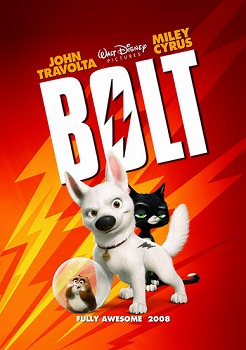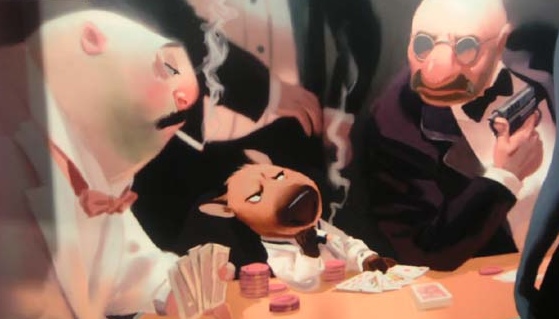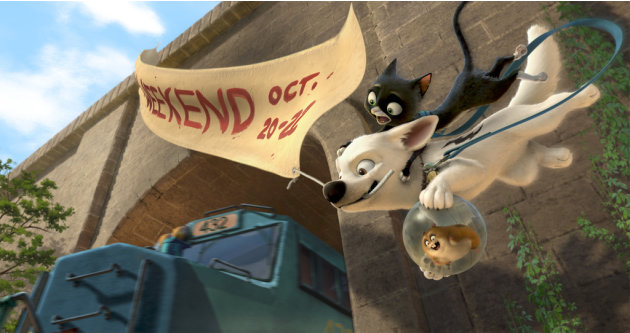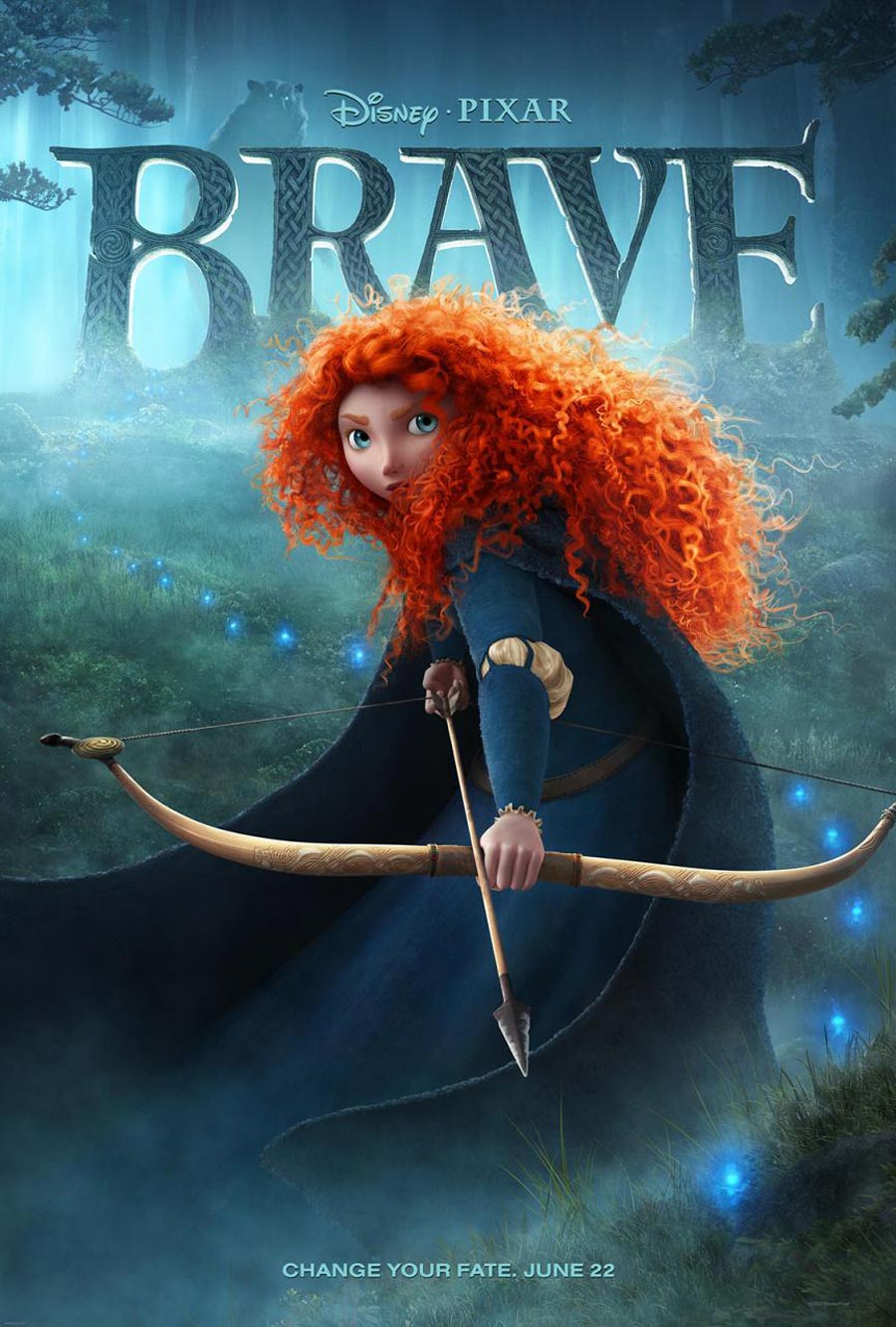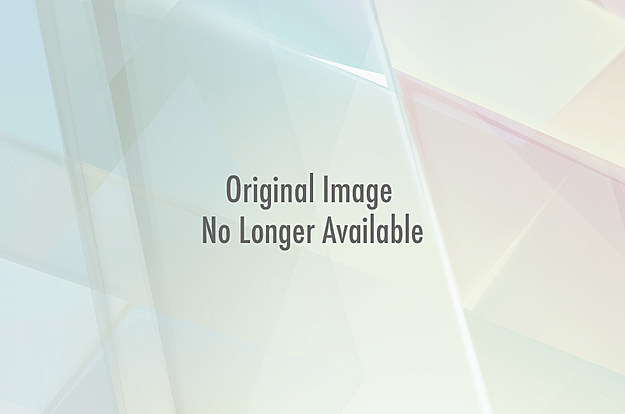Here in part 3, I take a look at Tangled, Walt Disney Animation Studios' 50th film (if you happen to go by the canon, that is). This film was notable for being Disney's biggest commercial success since the Renaissance, and one that got outright critical acclaim. But, is it deserving of the status of "Best Disney animated film in years?" Also, I take a look at Winnie the Pooh, the hand-drawn follow up to The Princess and the Frog.
~
Tangled
Directed by Byron Howard and Nathan Greno
Written by Dan Fogelman
Produced by Roy Conli, John Lasseter and Glen Keane
Released on November 24, 2010
Another project that was on and off at Disney for so many years, a serious attempt to actually get started on it occurred sometime towards the end of Michael Eisner’s regime. It was originally thought to be a Shrek-style film called Rapunzel Unbraided, and it was a project that just remained on the back burner until the new regime changed Walt Disney Animation Studios. The writers quickly dropped the original plot, involving two modern day teenagers playing the roles of Rapunzel and her love interest. It would not have worked.
Originally thought to be a revolutionary breakthrough for computer animation, the project would later shift to two directors Nathan Greno and Byron Howard, while original co-director Glen Keane (master Disney animator) was out. He was still involved with the recooked film, which went from Raounzel to Tangled due to Disney’s concerns over The Princess and the Frog’s box office performance.
Tangled comes off as two films much like Meet The Robinsons: 1). An irreverent comedy that sweetly pokes fun at Disney traditions, and not in a cynical and mean-spirited way like DreamWorks’ Shrek films. 2). A heartfelt film in the great tradition of classic Disney films. Meet The Robinsons had a hard time balancing two ideas, this one tries a bit harder and succeeds.
The rather gabby first act really establishes the relationship between Rapunzel (voiced by Mandy Moore) and Mother Gothel (voiced brilliantly by Donna Murphy). In the film’s first few minutes, Mother Gothel steals an infant Rapunzel from the king and queen of an unnamed kingdom and has her locked up in a hidden tower in the forest. Why? She wants Rapunzel’s magical hair to keep her young and beautiful.
Mother Gothel is manipulative of her, no doubt, but at the same time, it’s possible that Gothel actually has some form of affection towards her. Immediately, an emotional side of the story begins to take shape. At the same time, we’re treated to slapstick with Flynn Rider (voiced by Zachary Levy), a bandit who is just after valuables and Maximus, a palace horse. Actually, the two animals in this film don't speak, which makes them even funnier. Aside from Maximus, we also have Pascal, Rapunzel's chameleon. The comic relief all works very well and it adds fun to the story.
We are also introduced to the Stabbington brothers (voiced by Ron Perlman), who Flynn cons during the heist. They seem like minor characters at first, but they do play an important role later in the film along with the tiara that Flynn steals from the kingdom. Character development is more front and center in the film's second act, as we get to know more of Flynn's background. Rapunzel herself is a very well-written character. She isn't rebellious per se, she's curious about the lanterns that always appear on her eighteenth birthday, being sheltered her whole life. She stills worries about what Mother Gothel will say when she leaves the tower for the first time, which says quite a lot about her.
Alan Menken’s musical numbers seem a bit modest at best early on, though “Mother Knows Best” says a lot about Gothel’s character (Judge Claude Frollo in a way, but more flamboyant) despite being a bit silly. Rapunzel’s “When Will My Life Begin” is a great opening that is a bright, cheery number. Menken tries to recreate a showstopper with “I’ve Got a Dream”, a rather nonsensical song that everyone in The Snuggly Duckling (a tavern full of huge, intimidating brutes who are just silly, dreaming men at heart) sings with joy. It’s a little too silly, and it just feels like an attempt to give us another “Gaston”.
Tangled starts firing on all cylinders towards the end of the second act. After an uplifting dance scene in the middle of the kingdom (an actual dance, not one set to some pop song), we see just how saddened the King and Queen are when they plan to launch the lanterns in celebration of Rapunzel’s eighteenth birthday. It’s a silent scene, and for the better, and it wonderfully pulls the heartstrings. This leads to Menken’s “I See The Light”, the film’s best song and one that is a lovely tribute to the big love ballads in the Disney Renaissance films: “Tale as Old as Time”, “A Whole New World”, etc. The color, art direction and lighting on this scene is breathtaking.
When Rapunzel realizes how she’s been lied to all these years, it leads to a surprisingly tense third act that ends with a very sweet conclusion. The color scheme changes during Rapunzel confrontation with Mother Gothel, along with Menken’s score. The writers still attempt to throw humor into the film’s third act, but it’s never distracting. Tangled’s story is very solid, but it’s only held back by a rather inconsistent script. The aforementioned "two movies" problem does affect the film’s first act, and some of Menken’s work is rather flat. At times, the dialogue is all modern and that can get annoying. Eugene’s narration at the film’s beginning and end was rather unnecessary as well, because it treats the film as if it isn't serious. ("But don't worry! This is a fun story!")
Pretty as the animation is, it’s not the revolutionary style we were going to get. Instead, it’s an upgrade of the painterly look used in Bolt. It is a mere stepping stone, but it’s still nice. The character designs are appealing, but not fresh. They basically retain the typical appealing Disney look, but in computer animation. Rapunzel and Flynn's designs are very good, Mother Gothel's tows the fine line between menacing and motherly, with a dash of something over the top. The rest of the humans' designs aren't bland, but they're more on the typical side. Nothing unexpected here. The best designs were saved for Maximus and Pascal, being the film's show-stealers.
Tangled, like most of the recent Disney films, is another project that was saved from development hell. It's one that entertains like no other, and it comes off as a great crowd-pleaser. However, the story and script don’t match the likes of The Princess and the Frog, and even Bolt to some extent. The film somewhat struggles to keep a consistent tone, not knowing if it wants to be a fun comedy or something more in line with a Pixar film. It’s a bit on the safe side, but it has its heart in the right place.
B+
Winnie the Pooh was really nothing more than a gap filler for both Walt Disney Animation Studios and for corporate Disney. Disney apparently needed another Winnie the Pooh feature film to keep the franchise alive (why would they though?). Thankfully, John Lasseter took this under his wing and set out to make a film that was faithful to Walt Disney’s take on A.A. Milne’s classic stories.
At a brisk 69 minutes, Winnie the Pooh is well-paced and quick. It only takes two stories and turns them into a non-cinematic storyline, but one that is very charming and immediately likable. The voice cast is mostly different from the folks who voiced the Pooh characters for the last ten years, but they do a fine job nonetheless.
Nods to the original shorts are littered everywhere. Winnie the Pooh can almost be called a tribute film, yet it's one of the few films in this day and age that appeals more to children yet it does not pander to them like most of today's kid-oriented films. Winnie the Pooh is still a family film, as there is enough wit and charm to entertain anyone older than eight. It's very sentimental and nostalgic, tapping the right buttons.
Pretty as the animation is, it’s not the revolutionary style we were going to get. Instead, it’s an upgrade of the painterly look used in Bolt. It is a mere stepping stone, but it’s still nice. The character designs are appealing, but not fresh. They basically retain the typical appealing Disney look, but in computer animation. Rapunzel and Flynn's designs are very good, Mother Gothel's tows the fine line between menacing and motherly, with a dash of something over the top. The rest of the humans' designs aren't bland, but they're more on the typical side. Nothing unexpected here. The best designs were saved for Maximus and Pascal, being the film's show-stealers.
Tangled, like most of the recent Disney films, is another project that was saved from development hell. It's one that entertains like no other, and it comes off as a great crowd-pleaser. However, the story and script don’t match the likes of The Princess and the Frog, and even Bolt to some extent. The film somewhat struggles to keep a consistent tone, not knowing if it wants to be a fun comedy or something more in line with a Pixar film. It’s a bit on the safe side, but it has its heart in the right place.
B+
~
Winnie the Pooh
Directed by Stephen J. Anderson and Don Hall
Written by Stephen J. Anderson, Clio Chiang
Don Dougherty Don Hall, Brian Kesinger, Nicole Mitchell
Jeremy Spears and Kendelle Hoyer
Produced by Peter Del Vecho
Released on July 15, 2011
Winnie the Pooh was really nothing more than a gap filler for both Walt Disney Animation Studios and for corporate Disney. Disney apparently needed another Winnie the Pooh feature film to keep the franchise alive (why would they though?). Thankfully, John Lasseter took this under his wing and set out to make a film that was faithful to Walt Disney’s take on A.A. Milne’s classic stories.
At a brisk 69 minutes, Winnie the Pooh is well-paced and quick. It only takes two stories and turns them into a non-cinematic storyline, but one that is very charming and immediately likable. The voice cast is mostly different from the folks who voiced the Pooh characters for the last ten years, but they do a fine job nonetheless.
Nods to the original shorts are littered everywhere. Winnie the Pooh can almost be called a tribute film, yet it's one of the few films in this day and age that appeals more to children yet it does not pander to them like most of today's kid-oriented films. Winnie the Pooh is still a family film, as there is enough wit and charm to entertain anyone older than eight. It's very sentimental and nostalgic, tapping the right buttons.
Like the original shorts, it’s also a musical, with charming musical numbers and an affectionate re-imagining of the Winnie the Pooh theme song sung by Zooey Deschanel. The animation is virtually the same as the original shorts, it’s minimal and it resembles illustrations, but it's great to look at. At the same time, the animators throw in some surrealism to spice things up, with the chalk drawing “Backson” song scene and Winnie’s honey hallucination.
In the end, Winnie the Pooh is a pleasant film that’s very well-written. It’s not ambitious, being just a Winnie the Pooh film, but it’s a lot of fun and one that has a lot of passion put into it.
B+
~
A Grand Slam and a Big Bomb
Paperman, which is going to debut in front of Wreck-It Ralph, will be no ordinary animated short film. The animation itself is a seamless blending of computer animation and hand-drawn animation, not for a sequence, but for an entire short film. According to various reports, this is how Ron and John's next film is going to look. This is apparently going to be what Disney will be doing for traditional animated features. Not only are they experimenting and trying something different, they are also breaking new ground for the medium. If Ron and John's next film is just like this, then it's not only going to elevate Disney's animated feature studio at the box office, but propel the medium to amazing new heights. You might say the other studios are going to try and emulate that.
It seems as if Walt Disney's dreams of advancing the medium are going to come true. The Disney studios almost got there, had Pinocchio, Fantasia and Bambi never bombed at the box office and shattered Disney's confidence in ambitious works. Over 70 years later, as the studio is no longer controlled by executives or people who weren't creative, they have the opportunity to take daring risks again. With the success of Tangled behind them, now is their chance to really soar.
After several years of early development and story changes, a definitive story took shape at Walt Disney Animation Studios. Rapunzel would continue Disney's classic tradition of adapting well-known fairy tales. For many years of course, this was going to be Rapunzel Unbraided, which ultimately would not have worked out. One look at this PreViz from 2005 is a great indicator.
Glen Keane and the crew behind this film would bring forth a revolutionary art style that made the film look like a Rococo painting come to life. Over the years though, the film would only have sheds of that, instead it would just improve upon the unique look used for Bolt. When finished, Disney kept touting that the budget for this film was $260 million, which would make it the most expensive animated film ever produced unadjusted. Disney most likely took the money spent on early development over the years (for example, Disney spent $25 million during development of Kingdom of the Sun, which later was reworked into The Emperor's New Groove, so that was added to the finished film's $75 million production budget) and added that to how much the actual film cost to make, which should've been around $120-140 million.
Before Tangled's first trailer ever appeared, changes happened at Disney. Rich Ross, whose background was in television, mainly the Disney Channel, was made Chairman of the Walt Disney Studios by CEO Robert Iger. He immediately fired everyone in the marketing department and brought in inexperienced young blood. Rapunzel was dropped, as the executives blamed The Princess and the Frog's underperformance on young boys avoiding a film with "princess" in the title. Failing to realize that it was bland marketing that caused it to underperform, they assumed re-titling Rapunzel to Tangled would solve the problem. This change deservedly got criticized, since the film is, at heart, Rapunzel.
Tangled was an awful title, and many folks knew it. Disney veteran Floyd Norman scathed Disney's decisions, and he was right to do so. Tangled's teaser trailer, which debuted in front of Toy Story 3, was an absolute disaster. With its pop music, teenybopper dialogue ("Best day ever!") and frenetic tone, this looked like a debacle in the making. The marketing, however, was aggressive. The film debuted on November 24, 2010, touted as the 50th Disney animated feature film in the canon.
Something happened... It opened with... $48 million at the domestic box office, a record for a Disney animated feature film! Critics loved it, and word of mouth caught on that this was a comeback for Disney, despite how good Bolt and The Princess and the Frog were. With Thanksgiving weekend giving it a boost, Tangled outgrossed all of the post-Lion King Disney animated features unadjusted. It took in $200 million domestically and $590 million worldwide, while also doing very well on home media.
While Tangled's success was great, it's also saddening at the same time. The two films that preceded it definitely could've done as well had they been backed by better marketing, since word of mouth elevated those films beyond their awful opening weekend performances. With that behind them, you'd think there would be some fanfare for the next animated feature, right? Think again...
Enter Winnie the Pooh, which was a fairly modest project that only cost $30 million to make. It would be a cheaper endeavor, one that could keep the Winnie the Pooh franchise going. The problem was, selling a Winnie the Pooh film wasn't easy. Ever since the Winnie the Pooh merchandising explosion of the early 1990s, numerous direct-to-video and theatrical spin-offs, alongside awful preschooler television shows that heavily pandered to the younger set, Winnie the Pooh seemed like a "kids only" thing from Disney despite the brilliance of the original short subjects.
Winnie the Pooh was obviously going to be just like those short subjects, so maybe it would be a slow burner at the box office. It was not likely. Disney's marketing department, for reasons unknown, decided to give it the barebones treatment. It debuted in Europe first in mid-April, and it did terrible business. The domestic release occurred on July 15, 2011, the same day Harry Potter and the Deathly Hollows, Part 2 opened. Now, Winnie the Pooh obviously wasn't going to appeal to the same demographic, but it could've. Here's why...
When an animated film grosses a lot, it shows that more than just families and children made them a success. Adults and teenagers play a big part in the success of the biggest animated films, and Winnie the Pooh could've gotten a decent chunk of that had it been marketed correctly and given a better release date. With that, it only opened with an awful $7 million, but... Word of mouth was good! It climbed to $26 million, but that made it the least-attended Disney animated film in years.
Like I said in the review, Disney could've avoided this and just left 2011 empty. The two stories used to form the film (originally, there was going to be five!) could've been divided into two short subjects. With that, they could've avoided the financial disappointment. Hand-drawn animation wouldn't have taken such a harsh blow, and maybe hand-drawn animation would really make a comeback much earlier. It was another marketing woe from Disney that hurt a very good animated feature...
Meet The Robinsons, Bolt, The Princess and the Frog, Tangled and Winnie the Pooh are the rebirth of Walt Disney Animation Studios, as the first film slowly started the Third Golden Age of Animation alongside Enchanted. These films were met with praise for the most part, and are seen as superior to what Disney was churning out every year. After The Lion King, Disney's animation wing fell victim to the executives who thought their "help" was going to improve the animated features. There were a few risky efforts that worked for the most part, but other films only turned people away from the studio as Pixar, DreamWorks and Blue Sky were offering the goods.
Disney executives, and DreamWorks' executives, were so quick to torpedo hand-drawn animation in 2003. DreamWorks' Sinbad: Legend of the Seven Seas tanked and Disney's Brother Bear underperformed. Finding Nemo, on the other hand, outgrossed the two of them put together by an extremely wide margin. It did so because it was far superior to those films, not because it was a computer animated film. Sure, computer animation was a novelty to audiences back then, but now that it's worn off, now is the time to re-introduce hand-drawn to audiences. Now is the time to remind audiences why Disney is a great animation studio, and shatter the whole "Pixar is great, Disney is bad" mindset.
These five films are already proving this slowly but surely, as Disney seems to be excited about promoting the risky Wreck-It Ralph. With its November release date, an appeal amongst the gamer crowd along with family audiences, and a satisfying trailer, they are looking to recreate Tangled's success. If it does well, then that's good... But that can't be a once in a lifetime hit. Frozen needs to repeat that success when that opens in 2013. The next planned film is Big Hero 6, which will be something along the lines of a blockbuster being based on a Marvel Comics series. That should be another critical and commercial success, if not something that'll be an easy sell to support the studio.
But more importantly, Ron Clements and John Musker's next film, a hand-drawn film that's reportedly going to be done the same style of John Kahr's revolutionary short film Paperman, needs to be even more successful in order to really kick things into high gear.
But more importantly, Ron Clements and John Musker's next film, a hand-drawn film that's reportedly going to be done the same style of John Kahr's revolutionary short film Paperman, needs to be even more successful in order to really kick things into high gear.
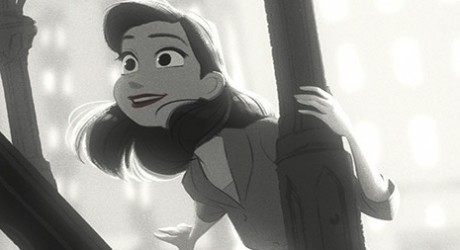 |
| The future of Disney animation? |
Paperman, which is going to debut in front of Wreck-It Ralph, will be no ordinary animated short film. The animation itself is a seamless blending of computer animation and hand-drawn animation, not for a sequence, but for an entire short film. According to various reports, this is how Ron and John's next film is going to look. This is apparently going to be what Disney will be doing for traditional animated features. Not only are they experimenting and trying something different, they are also breaking new ground for the medium. If Ron and John's next film is just like this, then it's not only going to elevate Disney's animated feature studio at the box office, but propel the medium to amazing new heights. You might say the other studios are going to try and emulate that.
It seems as if Walt Disney's dreams of advancing the medium are going to come true. The Disney studios almost got there, had Pinocchio, Fantasia and Bambi never bombed at the box office and shattered Disney's confidence in ambitious works. Over 70 years later, as the studio is no longer controlled by executives or people who weren't creative, they have the opportunity to take daring risks again. With the success of Tangled behind them, now is their chance to really soar.
Can it happen?
~
From Part 4 onwards, I'll take a look at the DreamWorks' films that were released in the last four years starting with Kung Fu Panda. Do you personally believe that Walt Disney Animation Studios is heading towards a new Renaissance? Do you think the Third Golden Age of Animation has been going on since 2007? Or do you think that it has yet to start? Which of these upcoming Disney films are you looking forward to? Which of the five films do you consider the best? Sound off!


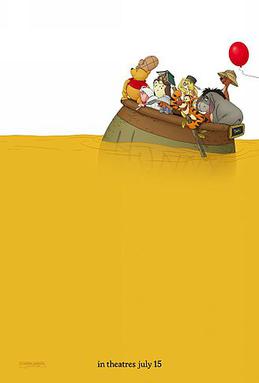

















_poster.jpg)


